Unlike Class 3 student Manoj Yadav,7, who is sitting at his assigned seat at the Patti Kalyanpur primary school in Uttar Pradesh’s Rampur on a weekday afternoon, his sister Laxmi, 7, also a student of Class 3, hasn’t been attending classes since July 1.
On July 1, the sole primary school in their village Abbas Nagar, 1 km away, was ‘paired’ with the bigger Kalyanpur school. While Manoj walks with a group of students from their village to the Kalyanpur school daily, his parents feel the path is unsafe for Laxmi.

 Students from Abbas Nagar in Uttar Pradesh’s Rampur walk through a thickly wooded area between their village and their newly merged primary school in Kalyanpur, located 1 km away. (Express Photo: Gajendra Yadav)
Students from Abbas Nagar in Uttar Pradesh’s Rampur walk through a thickly wooded area between their village and their newly merged primary school in Kalyanpur, located 1 km away. (Express Photo: Gajendra Yadav)
In line with a recent directive by the Basic Education Department under the National Education Policy (NEP), 2020, which emphasises greater collaboration, coordination and sharing of resources among institutions, since July 1, over 10,000 government primary schools across Uttar Pradesh have been ‘paired’ with nearby schools with better facilities.
While similar exercises aimed at rationalising resources have been carried out in other states too, UP government officials insist the schools in the state are not being merged but ‘paired’. “Unlike mergers, where schools cease to exist, paired schools can be shifted back to their original buildings in case of overcrowding at the new ones,” said a district-level education officer.
 The locked primary school at Abbas Nagar village. (Express Photo: Gajendra Yadav)
The locked primary school at Abbas Nagar village. (Express Photo: Gajendra Yadav)
However, the Opposition — from Samajwadi Party chief Akhilesh Yadav to Congress general secretary Priyanka Gandhi Vadra and Bahujan Samaj Party chief Mayawati — has opposed the move, saying it will “deprive” future generations, particularly those from the backward, Dalit and minority communities, of their right to accessible and affordable education.
The policy has also prompted protests from teachers’ associations and parents, with petitions being filed against it in the Allahabad High Court.
Upholding the state’s decision, the court had on July 7 said the move did not violate Article 21A (right to free and compulsory education for children aged six to 14). The court also said the move aimed to provide children with quality education and equal opportunities since resources in small schools were scattered, depriving children access to adequate teaching staff, libraries, sports and digital learning facilities.
Story continues below this ad
Kanchan Verma, Director-General, UP school education, says, “Of 1.32 lakh government schools in UP (with nearly 1.48 crore students), 10,784 primary schools are being paired.”
Officials said these pairings were done keeping in mind multiple factors, including low enrolment and poor infrastructure.
Yet, since the recent pairings in UP, teachers say some of their students, especially the girls, haven’t been attending classes.
While the Abbas Nagar school had 41 students, the Kalyanpur school had 115 students and five teachers, including two Shiksha Mitras, before the pairing. Only 14 of Abbas Nagar students were present at Kalyanpur during a recent visit by The Indian Express.
Story continues below this ad
“Twenty-seven of my students — 16 girls and 11 boys — have not been attending school since the pairing. A few have joined private schools, but most are sitting at home,” says Shiv Kumar, the former head teacher at Abbas Nagar school who now reports to the Kalyanpur school.
Staff from old schools have been reporting to the new ones since July 1.
Sitting near a bundle of freshly cut fodder, Manoj and Laxmi’s aunt Meera, 48, says, “Manoj went to school, but Laxmi does not want to go.”
“Beech mein jungle hai (there is forest on the way),” Laxmi explains sheepishly.
Story continues below this ad
Though the family is yet to take a call on Laxmi’s education, Meera says her parents are farm labourers and can’t afford to send her to a private school.
 (From left) Radha Yadav, her daughter Meenaksi Yadav, a Class 4 student, her sister-in-law at their Abbas Nagar house. Meenakshi has stopped attending school since the pairing. (Express Photo: Gajendra Yadav)
(From left) Radha Yadav, her daughter Meenaksi Yadav, a Class 4 student, her sister-in-law at their Abbas Nagar house. Meenakshi has stopped attending school since the pairing. (Express Photo: Gajendra Yadav)
Like Laxmi, Meenaksi Yadav, a Class 4 student from Abbas Nagar village, has not been going to school since July 1. On a school day, she sits next to her mother Radha, 40, a farm labourer, who says, “Door pad gaya (the Kalyanpur school is far). She would walk alone to the local school. What if someone does something to her in the woods on the way to Kalyanpur?”
A senior education department officer in Lucknow said efforts are on to encourage the students to attend the new schools and that all grievances of parents would be addressed.
He adds, “No one is forcing parents to send their children to the new schools. They can send them to their old school.”
Story continues below this ad
However, when The Indian Express visited the Abbas Nagar school at noon on a weekday, its main gate was locked.
The government’s move has triggered similar fears in Lucknow, where nearly 154 primary schools have been paired.
 The Baka primary school in Lucknow’s Malihabad tehsil. Two primary schools from the nearby Paharpur and Bargadhi, have been paired with this school. (Express Photo: Vishal Srivastav)
The Baka primary school in Lucknow’s Malihabad tehsil. Two primary schools from the nearby Paharpur and Bargadhi, have been paired with this school. (Express Photo: Vishal Srivastav)
At Paharpur in Malihabad tehsil of rural Lucknow, the primary school has been paired with the school in Baka, nearly 3 km away.
With the Right to Education Act mandating that the primary school must be in a 1-km radius of the child’s residence, Ram Pravesh, Basic Shiksha Adhikari, Lucknow, says, “We have asked Block Education Officers to carry out a ground-level feasibility check, including schools located far from a neighbourhood.”
Story continues below this ad
Till last year, the Paharpur school had just 28 students. After its three teachers — two assistant teachers and one Shiksha Mitra — started encouraging families to send their children to school, the number rose to 54 this year. Though the Paharpur school was merged with one at Baka due to its ‘poor infrastructure’, none of its 54 students have been attending school.
In Paharpur village, the families cited several reasons for keeping the children away from the Baka school — from increased distance to aggressive stray dogs near a gaushala en route.
Before the pairing, Mula Devi’s grandchildren, Class 2 student Kunal, 7, and Class 3 student Payal, 8, walked barely 500 metres from home to school. “We took them to the new school one day, but a stray dog attacked us on the way. We decided the children can’t walk to school. If the government doesn’t reverse its decision, we will either send them to a private school or they will stay at home,” says Devi, 62.
Paharpur teachers say they are trying to encourage the students to attend the new school. “We started ferrying some students to school on our motorcycles, but the arrangement wasn’t sustainable,” says Vijay Kumar Bajpai, the former teacher incharge of the Paharpur school.
Story continues below this ad
Even the primary school in Bargadhi, which had 14 students, has been paired with the one at Baka, located around 1 km away. Rahisa Khatoon, an assistant teacher at Bargadhi, says all 14 have been attending classes in Baka.
 Class 1 students studying on the porch at the paired school in Bhulsi. (Express Photo: Vishal Srivastav)
Class 1 students studying on the porch at the paired school in Bhulsi. (Express Photo: Vishal Srivastav)
In Malihabad tehsil’s Datali village, the primary school had just 39 students. Since it was paired with the school in Bhulsi, located around 2 km away, only 12 have been attending classes.
Assistant teacher Farhad Kamal says, “We are persuading parents to send the children to Bhulsi, but they have their own constraints.”
An education official said infrastructure from the merged schools will be used to set up Bal Vatikas (pre-primary schools) across the state. “Anganwadi centres from nearby areas will be shifted to these Bal Vatikas, which will have one Early Childhood Care and Education teacher, child-friendly furniture, outdoor play areas, learning materials, etc.,” the officer added.
Story continues below this ad
 The locked primary school at Datli village in Lucknow’s Malihabad tehsil. This school has been paired with the school in Bhulsi. (Express Photo: Vishal Srivastav)
The locked primary school at Datli village in Lucknow’s Malihabad tehsil. This school has been paired with the school in Bhulsi. (Express Photo: Vishal Srivastav)
Back at the Kalyanpur school, Manoj is among the first to line up outside the gate after the final 2 pm bell. As he waits for the others, he says, “I try to teach my sister Laxmi what I learn in school, but I forget quite a bit by the time I reach home. I liked going to school with her. I hope our old school reopens soon.”
Led by Class 5 student Rachit, the senior-most, all Abbas Nagar students form a queue, hold hands and sing songs as they follow him over a narrow pagdandi (trail) through the fields and a thickly wooded area.
“Agar koi gum gaya, toh sabka school band ho jayega (Even if one of us gets lost, none of us will be allowed to attend school),” says Rachit.



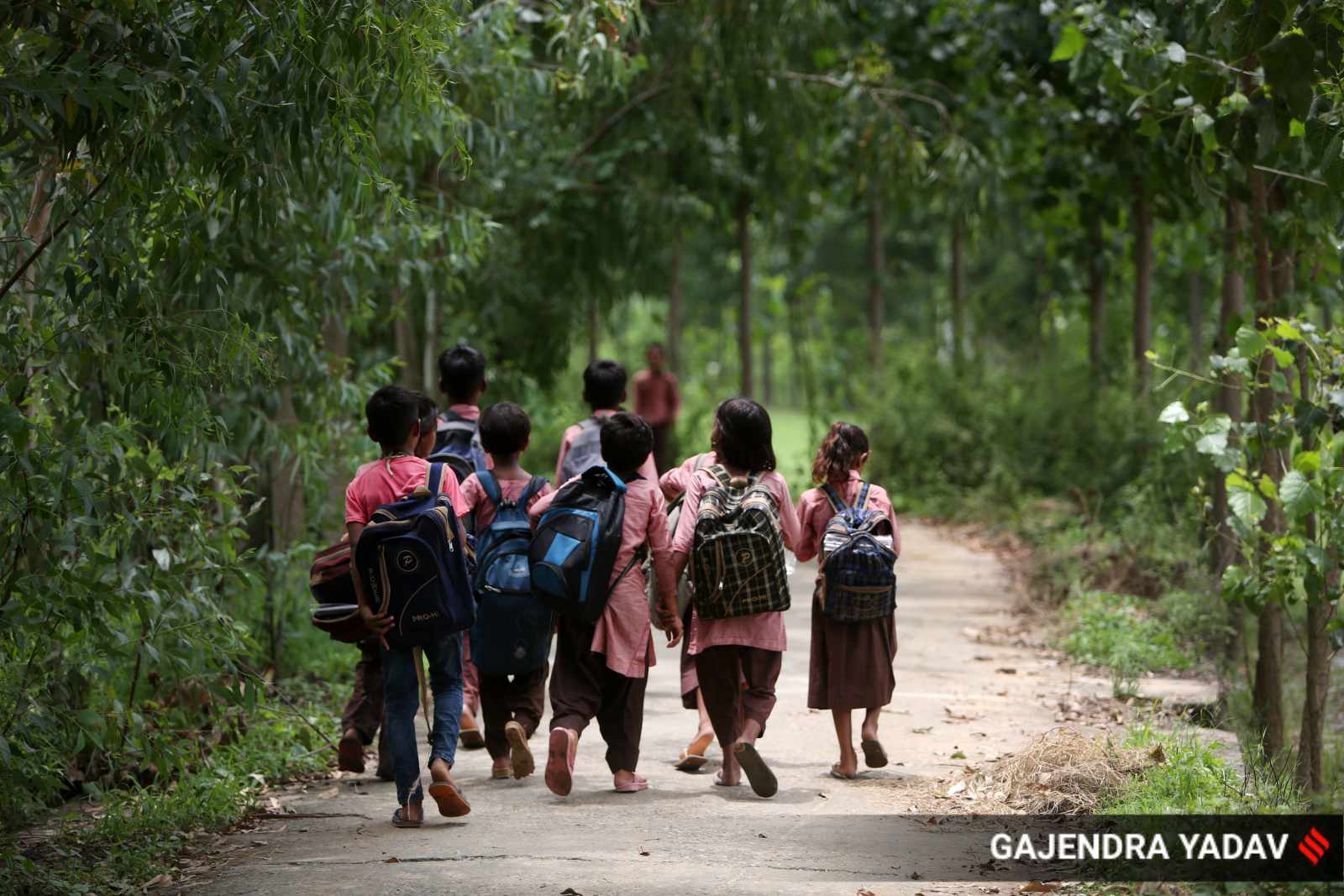 Students from Abbas Nagar in Uttar Pradesh’s Rampur walk through a thickly wooded area between their village and their newly merged primary school in Kalyanpur, located 1 km away. (Express Photo: Gajendra Yadav)
Students from Abbas Nagar in Uttar Pradesh’s Rampur walk through a thickly wooded area between their village and their newly merged primary school in Kalyanpur, located 1 km away. (Express Photo: Gajendra Yadav)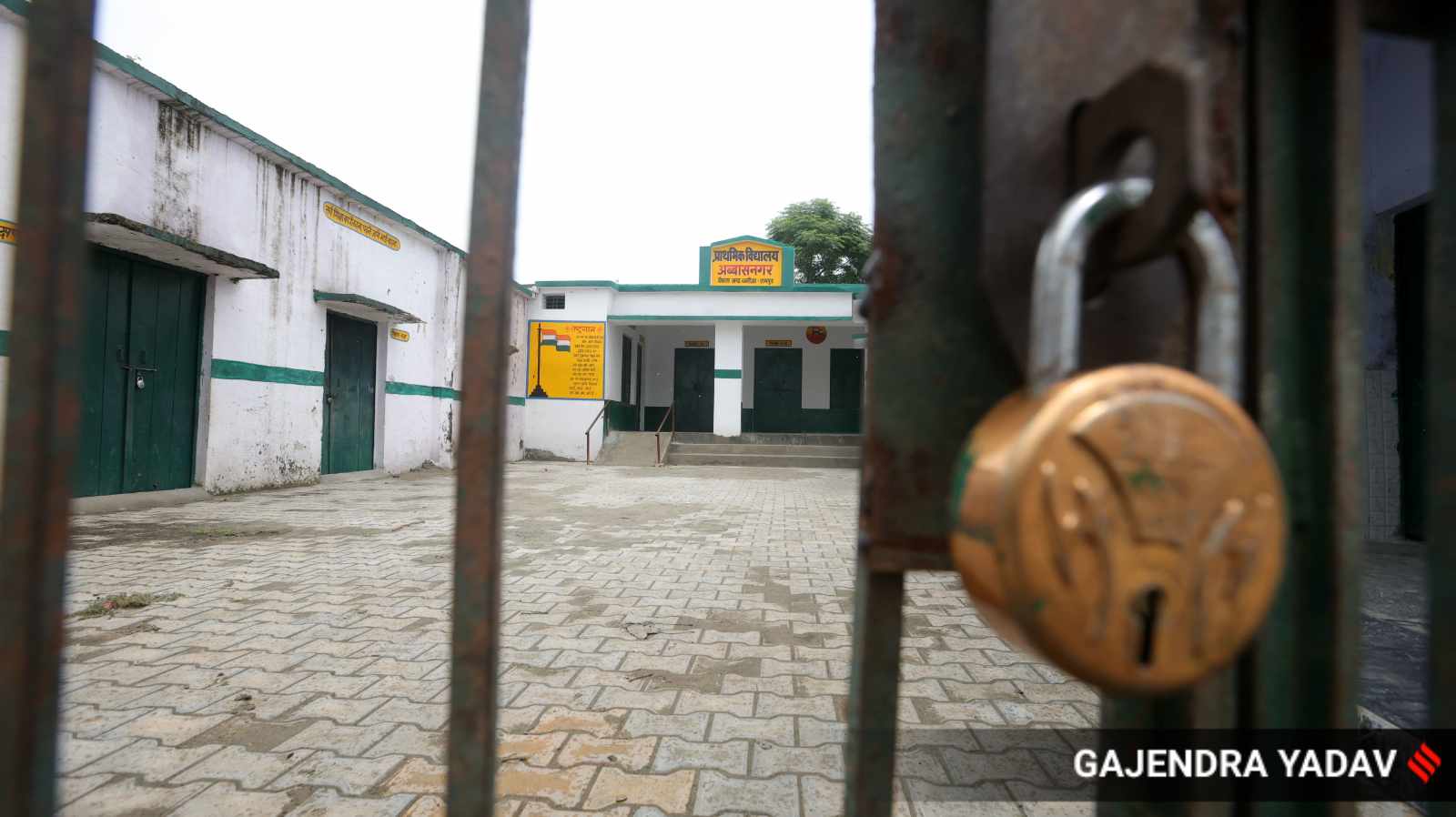 The locked primary school at Abbas Nagar village. (Express Photo: Gajendra Yadav)
The locked primary school at Abbas Nagar village. (Express Photo: Gajendra Yadav)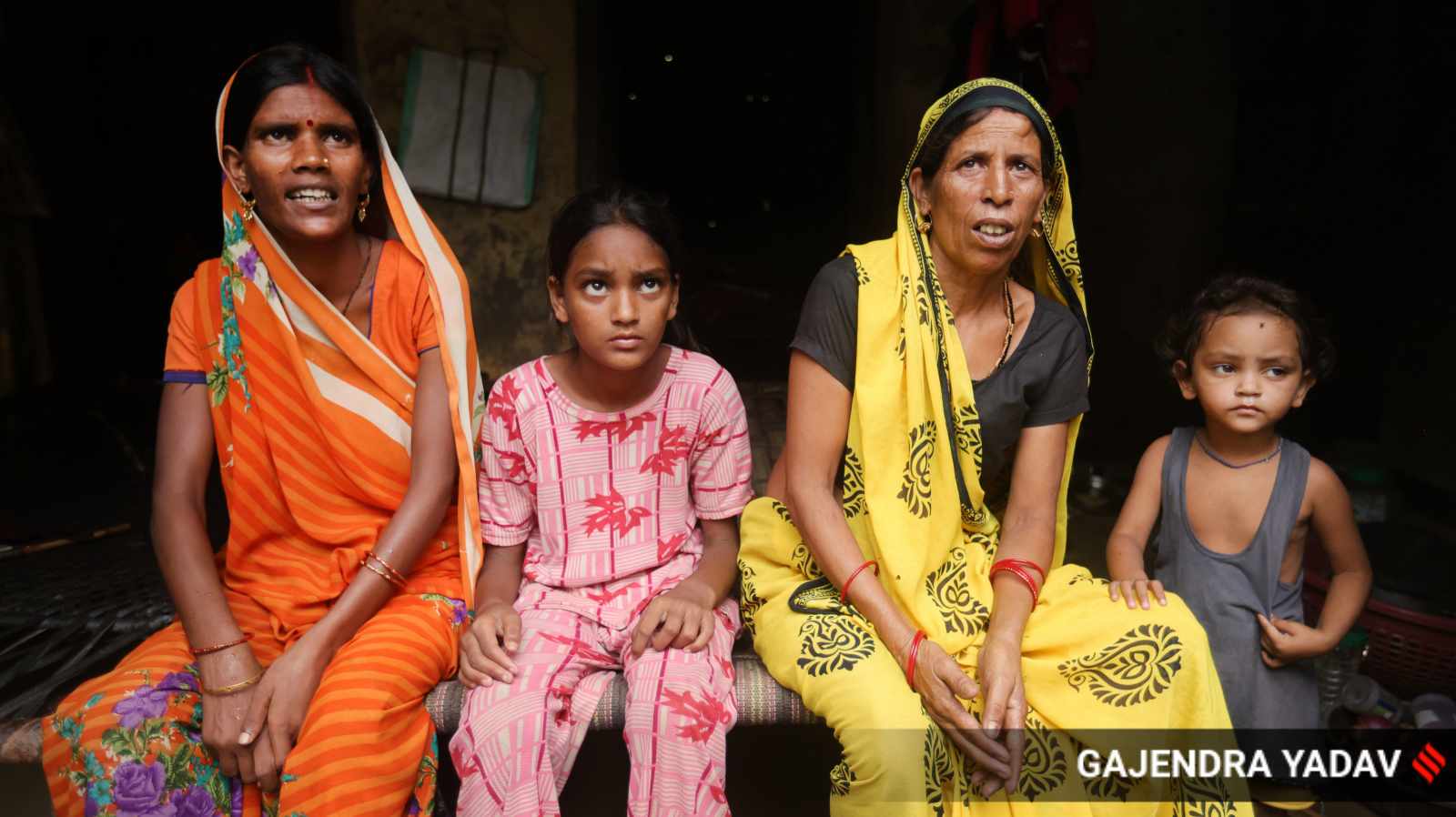 (From left) Radha Yadav, her daughter Meenaksi Yadav, a Class 4 student, her sister-in-law at their Abbas Nagar house. Meenakshi has stopped attending school since the pairing. (Express Photo: Gajendra Yadav)
(From left) Radha Yadav, her daughter Meenaksi Yadav, a Class 4 student, her sister-in-law at their Abbas Nagar house. Meenakshi has stopped attending school since the pairing. (Express Photo: Gajendra Yadav)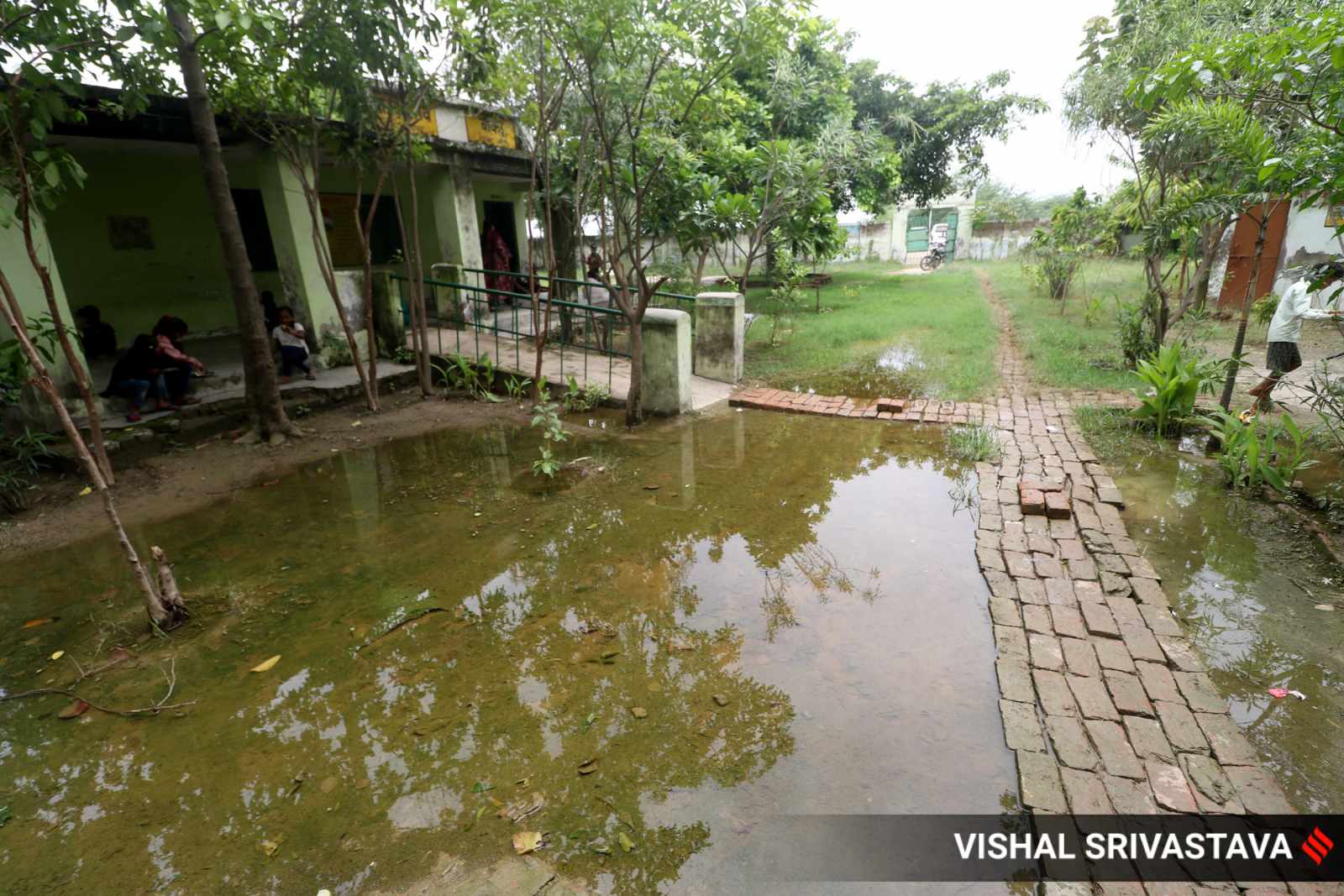 The Baka primary school in Lucknow’s Malihabad tehsil. Two primary schools from the nearby Paharpur and Bargadhi, have been paired with this school. (Express Photo: Vishal Srivastav)
The Baka primary school in Lucknow’s Malihabad tehsil. Two primary schools from the nearby Paharpur and Bargadhi, have been paired with this school. (Express Photo: Vishal Srivastav)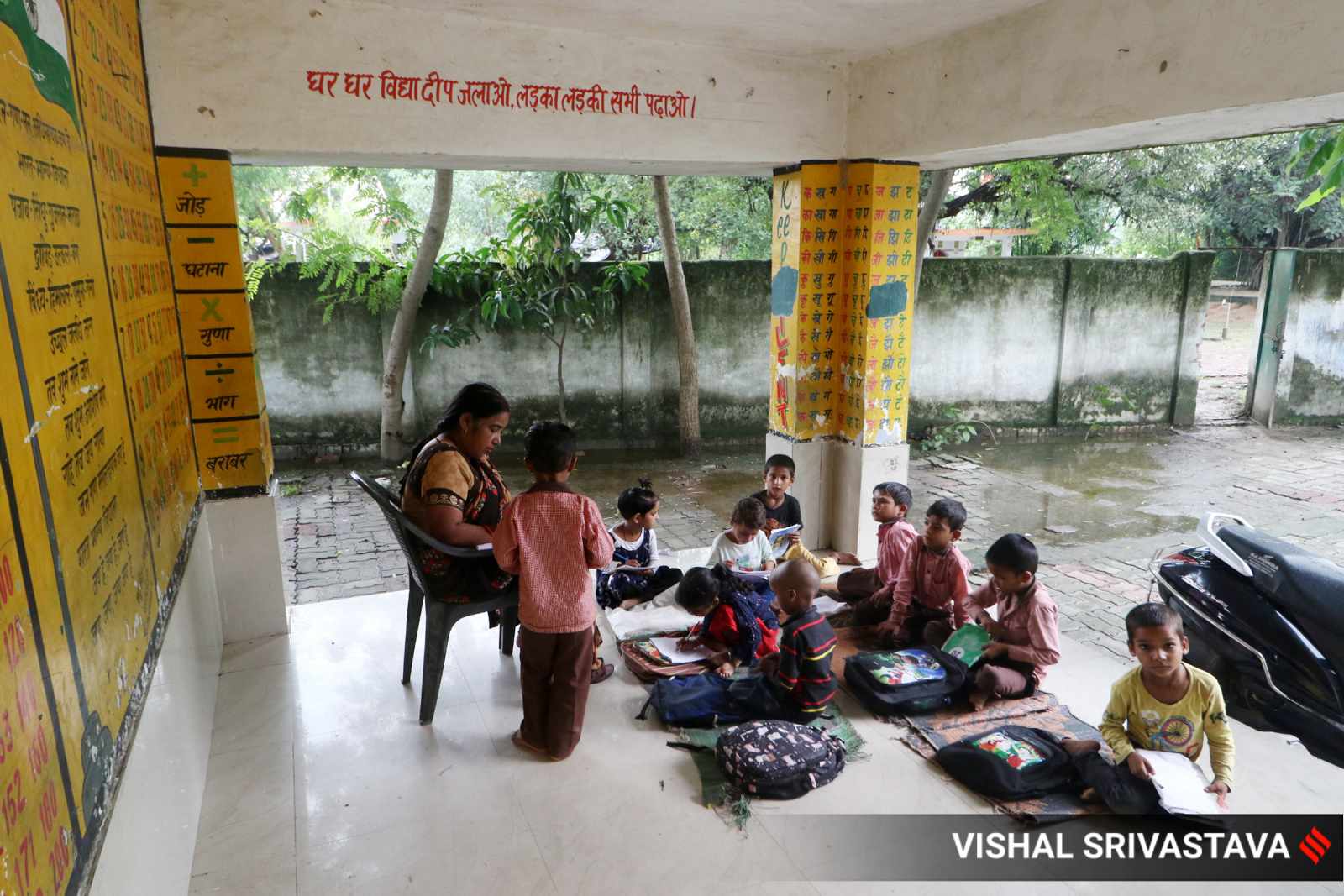 Class 1 students studying on the porch at the paired school in Bhulsi. (Express Photo: Vishal Srivastav)
Class 1 students studying on the porch at the paired school in Bhulsi. (Express Photo: Vishal Srivastav) The locked primary school at Datli village in Lucknow’s Malihabad tehsil. This school has been paired with the school in Bhulsi. (Express Photo: Vishal Srivastav)
The locked primary school at Datli village in Lucknow’s Malihabad tehsil. This school has been paired with the school in Bhulsi. (Express Photo: Vishal Srivastav)




























